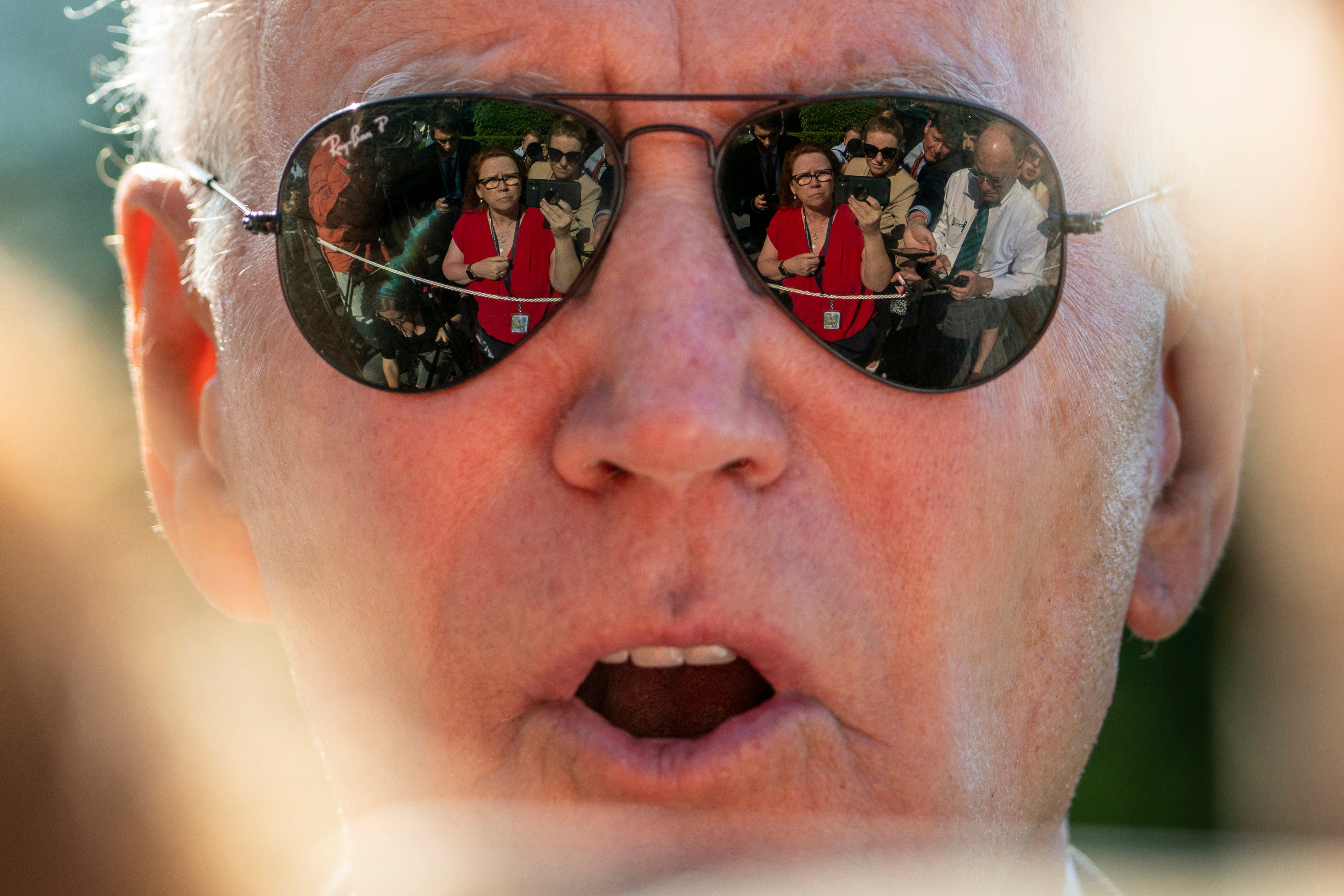Rock stars keep going into their 80s – so why not Joe Biden?
Age is no barrier for the ‘golden oldies’ playing to full arenas and wowing summer festivals, says David Lister. Before he abandons his re-election bid, the 81-year-old US president should take his lead from guitar legends of a similar vintage


As the debate over Joe Biden’s age and fitness for another term becomes increasingly heated, it is strange that the US president has not employed one particularly strong argument in defence of octogenarians – rock stars of a similar vintage or older are still going strong, and showing more energy, determination, charisma and – in some cases – athleticism than people half their age.
The youth culture of the 1960s has, incredibly, turned into an old-age culture of the present day, with many of the same performers simply refusing to give up.
This week, Bob Dylan – 83, and two years older than Biden – announced a UK tour that will culminate in five nights at the Royal Albert Hall. The week before, Paul McCartney, 82, fresh from a tour of the US, announced that he would be playing London’s O2 Arena at Christmas. Last weekend, Stevie Nicks, 76, of Fleetwood Mac, sang to mass crowds in Hyde Park.
The Rolling Stones are in the middle of an American tour, and the videos on social media are jaw-dropping. Mick Jagger, 80, is, quite astonishingly, doing some of the identical dance moves and giving the same high-energy performance that he did in cinema gigs up and down the country in 1964. He’s not just good for his age, he’s good for any age.
One could go on, and on, and on. The Who seem to be perpetually touring. Van Morrison, 78, has confirmed new dates. Pink Floyd’s former lead men David Gilmour, 78, and Roger Waters, 80, no longer talk to each other but continue to tour separately. Rod Stewart, 79, also has a punishing schedule of gigs for the rest of the year.
For both the stars and the long-term fans, this situation never seemed remotely possible when we saw our guitar heroes as the personification of rebellion against our parents.
When I met Paul McCartney not that long ago, I put to him the fact that he and all these others were still on stage, and asked him if it made him rub his eyes. “I do. We all do,” he replied. “In the Beatles, we always said 10 years. But it kept on and kept on, and it kept being good, and we seemed to be the people who could do it. Now there is a great generation of young people who can also do it, but it tends to be that the people packing them in are the people who have the material, have hits, songs people know, and I think that’s important. I think they have stagecraft, they have an ability with an audience.”
Of course, Sir Paul – who was dancing in the audience at Taylor Swift’s recent Wembley Stadium show – would acknowledge that she also packs them in, but his general point about a much older generation holds.
I discussed the same topic with Mick Jagger. He too said the Rolling Stones were determined to carry on, though he did make one concession to age by adding the words: “Health permitting.” That conversation took place before Charlie Watts’s death, a potent reminder that “health issues” will now determine the future of the stars and baby boomer fans.
And indeed they have. Paul Simon has hearing problems and has given up touring. Neil Diamond was diagnosed with Parkinson’s and has also said goodbye to stage shows.
And, of course, there are those “golden oldies” we have lost in recent years: David Bowie, Tina Turner, Christine McVie of Fleetwood Mac, David Crosby and Steve Harley.
Some just choose to call it a day and go out on a high. Elton John, 77, has done just that, though his farewell at Glastonbury last year showed him in scintillating form.
And some of those still doing it have adapted. Dylan now remains at his piano at the back of the stage. The Who present a different persona to the one we were familiar with 50-plus years ago. At those gigs, the abiding image was of the stage going dark and then, in a blaze of light, a boiler-suited Pete Townshend would leap high in the air to a crashing guitar chord in “Won’t Get Fooled Again”. Now, Pete, 79, looks more like a studious professor on stage. Bespectacled singer Roger Daltrey, 80, still does some of the microphone swinging that helped make him a global superstar at Woodstock all those years ago, but he paces himself.
There are fewer women from the Sixties and Seventies still performing but it’s hard to forget the Grammys earlier this year and the sight of Joni Mitchell, 80, still recovering from a brain aneurysm, singing her early hit “Both Sides Now”. It was spellbinding and extremely moving.
How long can they all go on? Surely, Jagger can’t do those moves at 90? The “younger generation” behind them is refusing to give up. Sting, 72, is in mesmerising form on his current European tour, the voice unchanged since his 1970s breakthrough. Through his tight, sleeveless T-shirt, the audience could marvel at muscles an Olympic swimmer would be proud of. Squeeze, of a similar vintage, were one of the opening acts at last month’s Glastonbury Festival.
Joe Biden needs to study rock stars’ touring schedules as he mounts the case for the defence.
Join our commenting forum
Join thought-provoking conversations, follow other Independent readers and see their replies
Comments
Bookmark popover
Removed from bookmarks